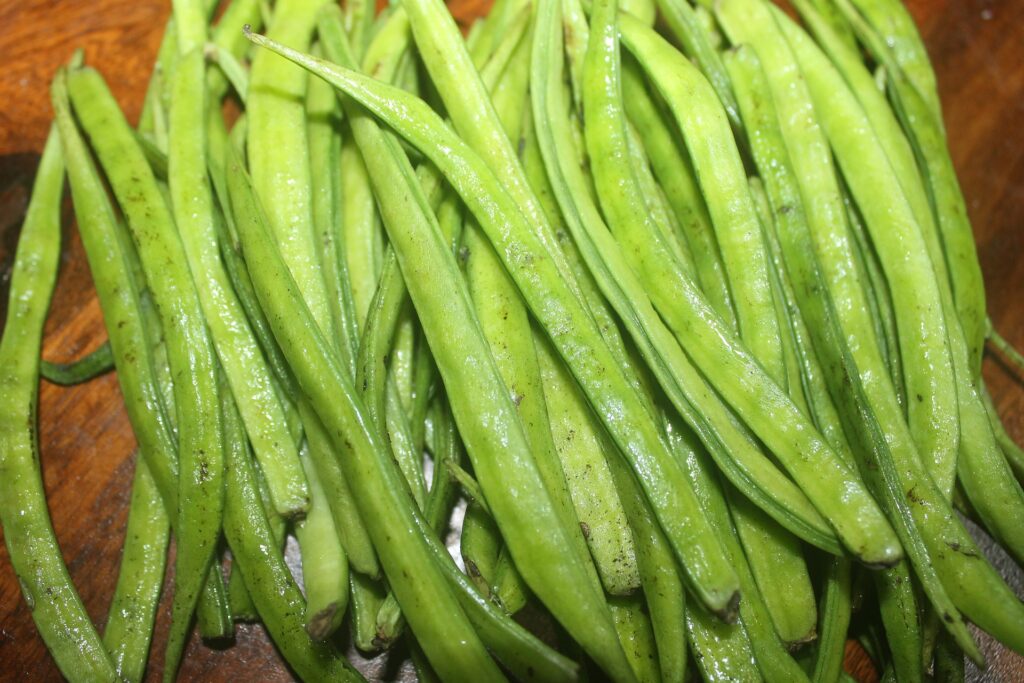How many additives were in the last thing you ate? Do you know why they were included?
Food additives have a complex reputation, which is understandable given that most of us feel worried when we see an ingredient that we cannot pronounce on our food packaging. But many food additives have natural sources and are crucial for preserving, stabilising and enhancing the properties of food. Therefore, they can make foods safer, and are crucial in making the global food trade possible.
Most additives are introduced in the secondary food processing stage, which is when ingredients are transformed into a food product, for example sugar, milk, cocoa butter and solids becoming a bar of chocolate with E442 (an emulsifier) thrown in to make sure the cocoa butter and milk do not separate. In this blog we will be answering the questions that led you here “what is this additive?” and “why is it there?”
But first, what are E numbers?
E numbers tend to make people wary, probably because we do not typically use numbers to refer to ingredients. In fact, E numbers are the identifiers given to each food additive that has been tested and permitted for consumption in the European Union, UK, and EEA countries. Many of these additives are naturally occurring substances. This is different in the US, where an additive must be listed as its common name. This difference can pose a problem for European Union exporters wanting to trade with the US.
Broadly, there are six types of food additives:
- Stabilisers, including anti-caking agents and emulsifiers
- Thickeners
- Flavourings
- Preservatives
- Colourants
- Humectants
What are food stabilisers?
Without stabilisers, many of your favourite foods would be unrecognisable. Stabilisers hold food ingredients together, keeping the physiochemical structure of food intact. Emulsifiers are the first type of stabiliser people think of because they are ubiquitous in dairy products like yogurt, homogenised milk and, famously, mayonnaise.
The emulsifier in mayonnaise is not an additional ingredient but an integral fat molecule in the egg yolk that is a lecithin. Lecithins are a group of phospholipids, a type of molecule that has both water-loving and water-repelling portions which means it can bind to water based and fat-based substances like the vinegar and oil in creamy mayonnaise. If you’ve read our post on food quality management, you’ll know that our food ingredients quality control team consider the mouth feel of a product before approving it, and emulsifiers are key to the making food feel good.
Other common stabilisers that improve texture include agar, guar, and xanthan gum.

Guar gum and xanthan gum: starch stabilisers and thickeners
Guar gum (E412) and xanthan gum (E145) are industry favourites for keeping food ingredients bonded and thickening substances, thereby improving texture overall. Despite their similar uses, they have vastly different origins; guar gum is a polysaccharide (a chain of simple sugars like glucose) extracted from the endosperm of guar (also known as cluster) beans whereas xanthan gum, also a polysaccharide, is produced from sugar fermentation.
Both guar and xanthan gum make solutions thicker because they are hydrocolloids, a group of organic compounds that retain moisture and form viscous dispersions or ‘clumps’ in water-based solutions1. That is why you can find them in ice creams with a lower fat content. You can also find them in salad dressings and gluten-free cakes, improving form and texture.
Manufacturing guar gum
The guar bean (Cyamopsis tetragonolobus) is native to Southeast Asia and today most of the world’s guar is grown in India and Pakistan but is also cultivated in South Africa, Australia, Brazil and the USA.
Guar gum is made mechanically by:
- Splitting and milling guar beans;
- Dissolving guar bean powder in water;
- Filtering the guar solution and drying it out;
- It is finally milled again to make clarified guar gum.
How is xanthan gum manufactured?
- Xanthomonas campestris bacteria housed in a liquid solution are fed carbohydrates from corn, soya, wheat, or dairy.
- The bacteria ferment the sugars they are fed, producing a slimy polysaccharide – the sought-after gum. Because xanthan gum is produced in the same liquid the bacteria live in, it must be separated out.
- The gum is dehydrated and ground into the powder that is then added to food2.
Corn starch: a household and industry staple
Corn starch comes from the endosperm, an organ for storing energy, of a corn kernel. Since the endosperm is mostly starch, we get ‘corn starch,’ although if you use British English you will know it as ‘cornflour.’ But what is starch? Starch is a carbohydrate made up of units of glucose.
Corn starch, like many others food additives mentioned here, is multifunctional. It has been used to thicken sauces for centuries but also works as an anti-caking agent, which is why you can find it in powdered substances like instant custard and gravy as well as cheese and yogurt. Corn starch prevents caking by attracting and containing water molecules, a property called hygroscopy. Cooking corn starch causes it to swell meaning it can absorb more water.
Corn starch is added to icing (or powdered) sugar to prevent caking and to keep it soft, but confectioners have mixed feelings about it. Still, some of the chewiest cookies get their additional thickness from corn starch.
For some, corn starch is falling out of favour and being substituted with arrow root powder, another white powder thickener. This is because of the strange flavour of corn starch (although not very noticeable in most foods) and its heat-dependent effectiveness. However, corn starch is still the more cost-effective thickener.
Ethanol: an ancient preservative turned flavour enhancer
Ethanol is the alcohol fit for human consumption mainly because is a pure organic compound i.e., is free of additives. Food grade ethanol is roughly 95:5 ethanol to water and is made from fermenting starches.
Before the advent of the refrigerator, many foods were preserved with ethanol because bacteria cannot grow in it. Now, ethanol is a solvent universally used to distribute food colouring and enhance natural flavour. In fact, the US Food and Drug Administration (FDA) only classes food flavourings as food extracts if they are ethanol-based.
Ethanol is a flavour enhancing solvent because… it improves the aroma of foods? Yes, much of taste perception is due to smell. The oral aroma molecules responsible for smell are released while chewing food. Ethanol, compared to water, is better at keeping aroma molecules trapped in liquids. Additionally, ethanol can dissolve water soluble and water-insoluble organic substances, making it a versatile solvent. These qualities, its antimicrobial properties, and ability to improve the colour and consistency of foods make ethanol one of the most ubiquitous additives in the food market.
Added flavours and food colourants
Now these are the ones that people tend to get worried about. But the flavour enhancers you eat will have been approved by food safety regulatory bodies in your country. One of these is monosodium glutamate (MSG), also known as E621 in the EU.
How does MSG work?
MSG improves how you perceive flavours by binding to excitatory neurotransmitter receptors called glutamate receptors. MSG looks like table salt and falls under the chemical classification of a salt but is not flavourful itself.
MSG is considered to help reduce sodium consumption because it contains less sodium than table salt but makes food tastier. MSG has been found to contain 37% less sodium than table salt3.
How is MSG produced?
There are three main ways of producing MSG.
- Fermenting bacteria
- From sugar in plants like cane, beet, cassava
- Hydrolysis (breaking down with water) of proteins in plants
Is MSG bad for you?
Like most things, MSG should not be consumed excessively. In the last decade, many medical scientists, doctors and biochemists have reviewed reports that MSG negatively impacts cardiovascular and cell health4, with many of the review publications stating that flaws in the primary research make it difficult to conclude human health may be affected by MSG intake. This is due to some studies exposing animals to very high quantities of MSG that we don’t see in humans or failing to report the amount of the enhancer that actually entered the bloodstream after being administered5. Like everything tasty, MSG needs to be taken in moderation in order to stay healthy.
Acidity regulators
As you’ve probably guessed, these additives control the balance between acids and bases in foods. This is important because controlling levels of acidity in food and drink is key to preventing bacterial growth, which is why acidity regulators tend to also work as food preservatives. Acidity regulators maintain a constant pH level by absorbing or removing excess protons (H+), a type of ion, from the food they are added to because proton concentration is what determines pH (or acidity) level6.
Citric acid, the food industry’s favourite?
Citric acid (E330), sometimes in powder form, is likely the most used acidity regulator in the EU and was first extracted from lemons in 1784. Now, it is industrially produced from the non-toxic strains ( of a fungus called Aspergillus niger fermenting cane sugar or molasses, but citric acid produced like this can be allergenic for some people.
Citric acid is found in a wide range of foods from cheese and ice cream to powdered drinks; it can serve distinct functions in these food products like aiding antioxidants, increasing the gel consistency in jams preserving canned fruits. You can try it yourself. Citric acid powder is now readily found in supermarkets because it can be added to wines and homemade drinks.


